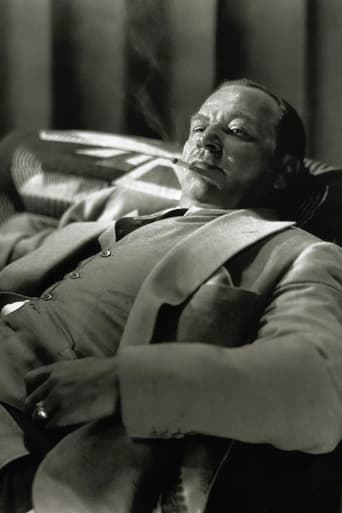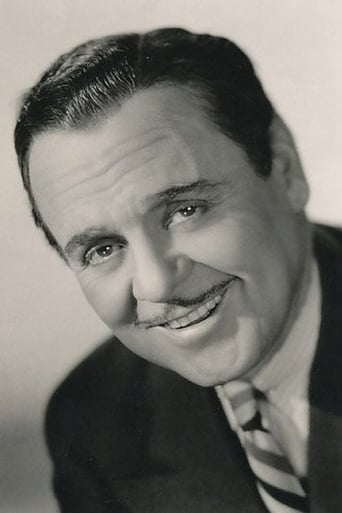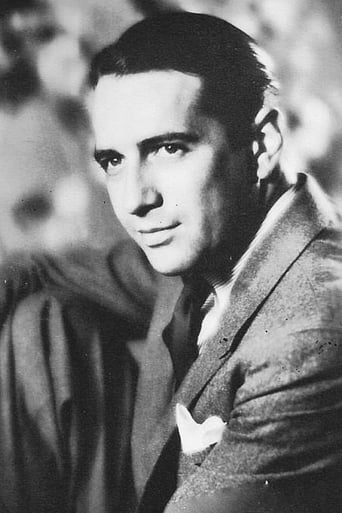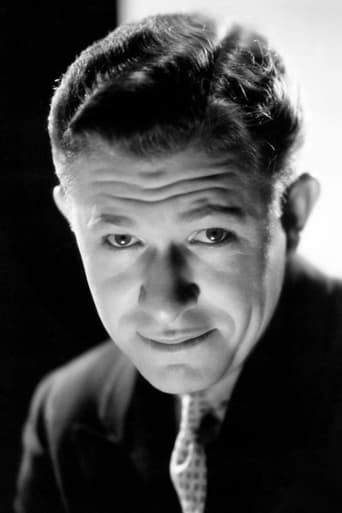evanston_dad
A not very engaging biography of Mexican revolutionary Pancho Villa, who as portrayed in this movie was a hero of the Mexican people and liberated them from the tyranny of government oppression.Really, the movie exists as a star vehicle for Wallace Beery, and he plays Villa the same way he played every character, as a sloppy, lovable lunkhead. The film rather humorously and without irony asks us to adore Villa even while portraying him as a sadistic, violent outlaw, as if it's not even aware that it's providing such an unsavory portrait of its main character. The film's rather dull over all, and even though I know it was a convention of the time, it's tough to tolerate actors like Joseph Schildkraut and Fay Wray made up in dark makeup to play Mexicans. And don't even get me started on the accents, which sound like they should be coming from anyone in the world other than people who actually were born and lived in Mexico.This film received four Academy Award nominations in 1934 but won only one of them, that for Best Assistant Director (John Waters, no not THAT John Waters). The other three nominations were for Outstanding Production, Best Writing (Adaptation), , and Best Sound Recording.Grade: C
lugonian
VIVA VILLA! (Metro-Goldwyn-Mayer, 1934), directed by Jack Conway, stars the Academy Award winning Wallace Beery ("The Champ" 1931) in one of his most notable film roles, that of the notorious Mexican bandit leader, Pancho Villa (1877-1923). Suggested by the book written by Edgcumb Finchon and O.B. Stade, the film itself is not so much an authentic biographical account on Villa's personal life, but, a fictional story scripted by Ben Hecht that gives its viewers an idea of what's to be shown: "FORWARD: This saga of the Mexican hero, Pancho Villa, does not come out of the archives of history. It is fiction woven out of truth, and inspired by a love of the half-legendary Pancho, and the glamorous country he served." For its eight minute prologue: "Mexico in the 1880s, a land cringing under the lone whip of Diaz the Tyrant," shows Pancho, the boy (Phillip Cooper) forced to witness his hard-working father (Frank Puglia) strung up at the whipping post for speaking out against a greedy Spanish landowner who has taken away his home and property along with his fellow peons. After the hundred lashes are carried out, the dead body is cut down, left on the street as a warning to the others. Later, Pancho, "the little avenger" during the night, awaits, stabs and kills his father's executioner, fleeing to the hills of Chihuahua. Years later, Pancho Villa, (Wallace Beery), the man, having earned the title of "La Cucaracha" (the cockroach), forms a bandit army, assisted by his trigger-happy henchman, Sierra (Leo Carrillo), to avenge the rich and give to the "peons." With the assistance of Johnny Sykes (Stuart Erwin), an American reporter for the New York World, Villa's name becomes well-known through the accounts printed in the newspaper. Don Felipe (Donald Cook) a wealthy landowner who sides with Villa's cause, introduces him to his friend, Francisco Madero (Henry B. Walthall), a gentle man known to all as "The Christ Fool." An eternal friendship forms as Madero offers Villa advise into helping him form a revolutionary Army. Though he does help with his cause, Madero is disappointed that Villa makes war as a bandit rather than a soldier. After the war, Villa, honored a hero by many, especially Don Felipe's sister, Teresa (Fay Wray), is soon exiled to El Paso, Texas, by orders of his rival, General Pascal (Joseph Schildkraut). After learning the assassination of President Madero, Villa returns to Mexico to avenge his friend's death, leading to another brutal revolution.Quite popular upon its release, earning an Academy Award nomination for Best Picture, VIVA VILLA! offers some very grim moments. Aside from the aforementioned flogging of Villa's father in the opening segment, another intense scene occurs indicating the method of torture towards General Pascal under Villa's orders. With females of minor importance, Fay Wray, the now legendary star of the original KING KONG (RKO Radio, 1933), surprisingly has a relatively small role as opposed to Katherine DeMille's temperamental Rosita Morales, as one of Villa's wives, who gathers more attention and screen time here. Wray's climatic moment occurs in a darkened room as her Teresa laughs hysterically at the angry Villa, forcing him to continually whip her, as shown through their silhouette images on the wall. This existing scene, among a few others, have vanished from circulating prints since the 1980s, shortening the original length from 115 to 109 minutes.Other members of the cast worth noting are: George E. Stone (Emilio Chavito, the artist who's rather draw pigeons than bulls); David Durand (The Mexican bugle boy who uses the American slang term, "ain't"); Paul Porcasi (The Priest); and, in smaller roles, Mischa Auer and Akim Tamiroff, among others.As much as its leading players could have been enacted by natural born Hispanic performers, such is not the case here. Beery's co-star, Leo Carrillo, would have made an agreeable Villa, with Gilbert Roland playing Sierra; and Mexican spitfire Lupe Velez in Fay Wray's part. Of the actors to have portrayed Pancho Villa in later years, Yul Brynnar or Telly Salavas for example, Beery, in mustache, large sombrero and Spanish dialect (which he tends to lose from time to rime) is as part of Beery as King Henry VIII or Captain Bligh is to Charles Laughton. Interestingly, Beery, having played Villa in the silent 1917 chaptered serial, PATRIA, would become a Mexican bandito once again in the western comedy, THE BAD MAN (MGM, 1941), where he not only physically resembles his Pancho Villa portrayal, but assumes the character name of Pancho Lopez. Stuart Erwin, who reportedly replaced Lee Tracy during production, might seem miscast at first, but acceptable considering how Tracy's familiar comedic style and gestures might have turned this bio-drama into a somewhat unintentional comedy.Reportedly controversial through its assumptions and enactment from the Mexicans point of view, VIVA VILLA may continue to be so today depending on its acceptance as a motion picture. The edited form taken from reissue prints of VIVA VILLA!, distributed to video cassette in 1993, is also the same presented on Turner Classic Movies cable channel. One can only hope a complete version of VIVA VILLA! will turn up again someday in honor of the man named Villa and the legendary song known as "La Cucaracha!" (***1/2)
gerrythree
Viva Villa was a hard luck movie. Filmed in part on location in Mexico City, during production, a plane carrying movie footage to Culver City crashed, requiring reshoots of the lost material. Wallace Beery, always an obnoxious star, demanded extra salary before he would appear again in the lost scenes. Lee Tracy, who originally played the part of the newspaper reporter, while on location was accused of getting drunk and urinating from his balcony room onto revelers celebrating the Mexican Independence Day. Tracy's action caused a national scandal. MGM managed to smuggle him out of the country. Then Louis B. Mayer fired Tracy from MGM and also got him blacklisted. Tracy's replacement, Stuart Erwin, was terrible as the reporter. Due to the delays, Viva Villa did not get released until after July 1, 1934, the date the Motion Picture Production Code took effect. MGM had to make changes to meet new code requirements, such as a scene where Fay Wray's character is whipped. Jack Conway took over for Howard Hawks as director to finish the production, which may explain the change in the movie pacing. The movie starts off fast, with a great scene of Villa and his riders taking over a town and Villa issuing swift justice as the new judge in town. Viva Villa never maintains that pace. But,one big plus, Leo Carillo as Villa's homicidal sidekick is great.




